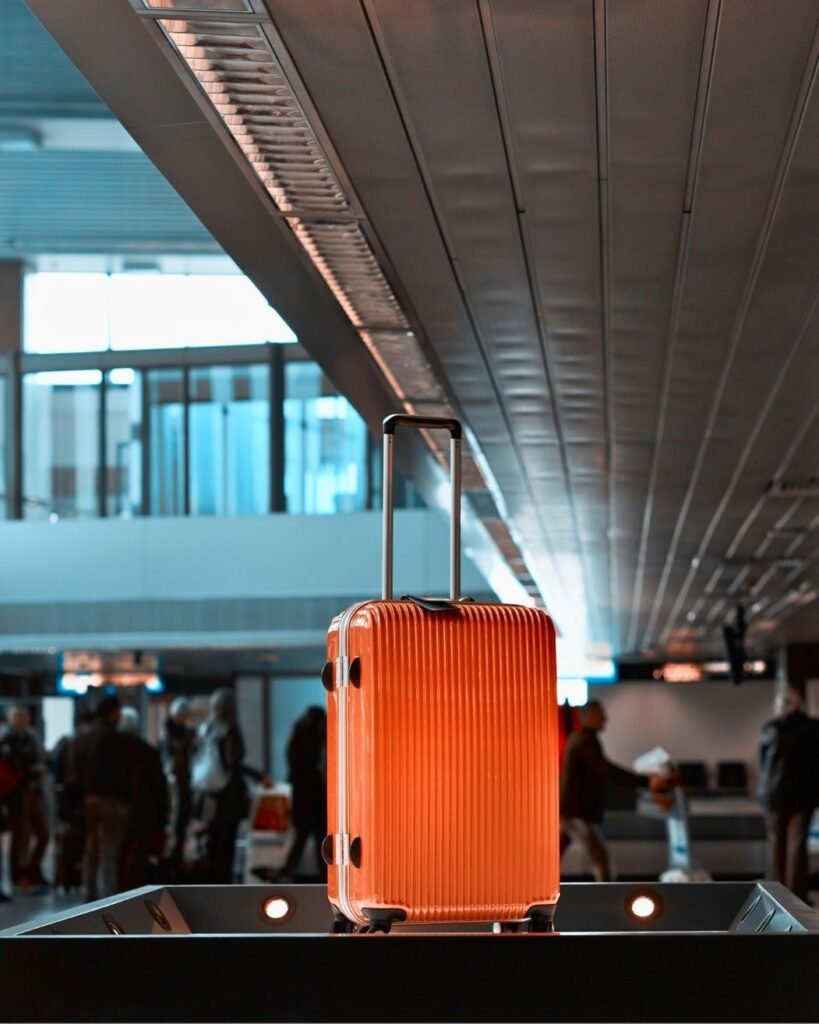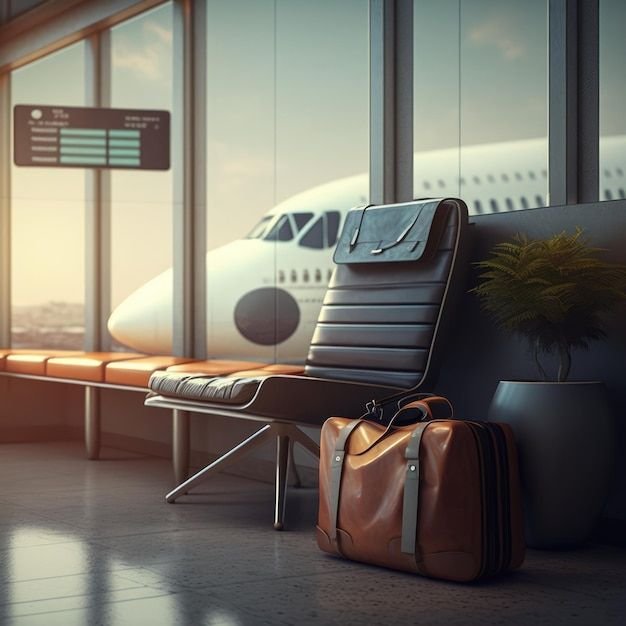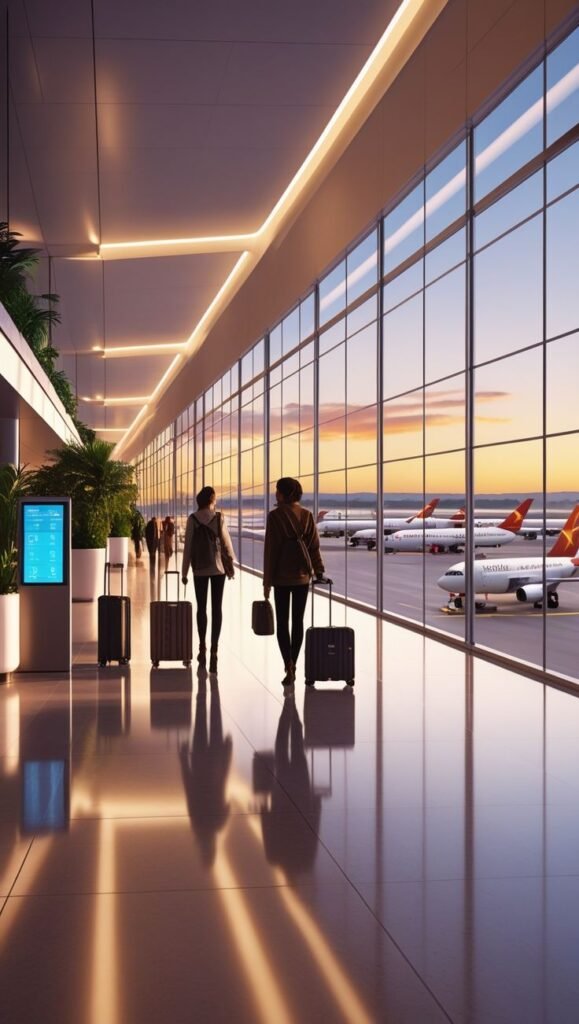Introduction
Losing luggage is every traveler’s nightmare. Whether you’re on a short weekend trip or a long international journey, the thought of your belongings being misplaced, delayed, or lost entirely can be stressful. Luggage mishaps can lead to missed opportunities, additional expenses, and a feeling of helplessness, especially if you rely on your bags for essential items like clothing, electronics, or travel documents. While airlines have improved their tracking systems, luggage loss and delays remain common, affecting millions of passengers worldwide each year.
Fortunately, there are proactive steps travelers can take to protect their belongings and minimize the risk of loss. From careful packing strategies and selecting the right Lost Luggage to technological tools and insurance options, every traveler can significantly reduce their vulnerability. This guide provides a comprehensive look at how to protect your belongings while traveling, offering practical advice for both first-time travelers and seasoned globetrotters.
By understanding the common causes of lost luggage, implementing preventive measures, and knowing how to respond if a bag goes missing, travelers can approach every journey with confidence. This article also explores emerging technologies, travel habits, and expert tips that help ensure your Lost Luggagearrives safely and your travel experience remains smooth. Whether you are traveling for business, leisure, or adventure, safeguarding your belongings is essential for peace of mind and enjoyment.

1. Understanding Common Causes of Lost Luggage
Lost luggage often results from simple yet frustrating issues during air travel. Mishandled transfers between connecting flights, incorrect tagging or labeling, and overloaded systems during peak seasons are among the most common reasons. At busy airports, tight layover times can cause bags to miss connections, while human errors at check-in desks may send Lost Luggage to the wrong destination.
Lost luggage can happen for a variety of reasons, many of which are preventable. Common causes include mislabeling, baggage handling errors, tight connecting flights, and damaged or malfunctioning Lost Luggage. Airports and airlines handle thousands of bags daily, and even minor errors can lead to misplaced items.
- Mishandled Transfers: Bags are sometimes sent to the wrong connecting flight, especially during tight layovers or peak travel periods.
- Mislabeling: Missing, incorrect, or damaged Lost Luggage tags can confuse airport staff and prevent your bag from reaching its destination.
- Overloaded Airports: During busy seasons, airlines process thousands more bags than usual, increasing the likelihood of errors.
- Unsecured or Faulty Luggage: Broken zippers, weak handles, or poorly constructed Lost Luggage can cause your bag to be lost or damaged.
By understanding these causes, travelers can take preventive measures to reduce the risk of loss. Awareness is the first step toward responsible and safe travel, ensuring your belongings are protected from common mishaps.
2. Choosing the Right Luggage
Selecting durable, high-quality Lost Luggage is one of the most effective ways to protect your belongings. Features such as reinforced corners, strong zippers, and sturdy handles minimize the risk of damage during transit. Rolling suitcases with four wheels are easier to maneuver, reducing the likelihood of mishandling.
Key Considerations:
- Durability: Materials like polycarbonate, ballistic nylon, and aluminum provide maximum protection.
- Size and Weight: Choose Lost Luggage that meets airline standards while offering sufficient space. Overstuffed bags are more prone to damage.
- Security Features: Look for TSA-approved locks, combination zippers, and anti-theft designs.
- Distinctive Appearance: Bright colors, unique patterns, or customized tags make it easier to identify your Lost Luggage at baggage claim.
Investing in quality Lost Luggage reduces the risk of loss and damage while providing peace of mind. Travelers should also check airline restrictions and guidelines to ensure their Lost Luggage meets all requirements for checked and carry-on bags.
3. Labeling and Identification
Proper labeling is essential to prevent lost luggage. Include both internal and external identification tags with your name, phone number, email address, and destination address. Avoid placing all information in one location; if the external tag is lost, an internal label can help airport staff return your bag.
Tips:
- Use waterproof and durable tags.
- Include a copy of your itinerary inside your luggage.
- Consider adding a unique identifier like a colorful ribbon, sticker, or Lost Luggage strap.
Distinctive and clear labeling increases the chances of your bag being quickly returned if misplaced, giving you confidence and security throughout your journey.
4. Packing Essentials for Safety
How you pack can affect the safety of your belongings. Fragile or valuable items should ideally be carried in your hand Lost Luggage rather than checked bags. Electronics, jewelry, important documents, and medications should remain with you at all times.
Packing Tips:
- Use padded compartments for delicate items.
- Avoid overpacking, which can strain zippers and seams.
- Place heavier items at the bottom of the suitcase for stability.
- Consider waterproof pouches for electronics and documents.
By strategically packing your luggage, you minimize the risk of damage or loss, ensuring essential items are always accessible.

5. Travel Insurance for Luggage Protection
Travel insurance is a vital tool for protecting your belongings. Many policies cover lost, delayed, or damaged Lost Luggage, offering financial compensation and support. When selecting a plan, ensure it covers the full value of your belongings and includes options for high-value items such as electronics, cameras, or designer goods.
Tips for Using Insurance Effectively:
- Keep receipts or proof of purchase for valuable items.
- Document your packed items with photos before traveling.
- File claims promptly if your luggage is lost or damaged.
- Understand airline compensation policies in addition to insurance coverage.
Travel insurance provides peace of mind, knowing that even if your Lost Luggage is lost, you are financially protected and can continue your journey without major setbacks.
6. Using Technology and Tracking Devices
Technology has revolutionized how travelers protect their Lost Luggage. GPS-enabled tracking devices, Bluetooth tags, and smart luggage allow you to monitor the location of your bags in real time. Many tracking devices connect to smartphones via apps, sending alerts if your luggage is moved or misplaced.
Key Tools:
- GPS Trackers: Devices like Tile or Apple AirTag can be placed inside your Lost Luggage to track it anywhere in the world.
- Smart Luggage: Some suitcases come with built-in tracking, USB charging ports, and remote locking mechanisms.
- Mobile Apps: Many airlines now offer luggage tracking within their apps, providing updates on the status of checked baggage.
Tips:
- Always activate tracking devices before checking in your luggage.
- Ensure your device is fully charged or has fresh batteries for the duration of travel.
- Pair multiple tracking devices for high-value or multiple bags.
Using technology helps travelers maintain control and reduces anxiety, as you can quickly locate misplaced luggage and inform airline staff with precise information.
7. Airport Strategies to Reduce Risk
Airports can be chaotic, especially during peak travel seasons, but a few smart strategies can reduce the chances of your luggage going missing. Arrive early to allow enough time for check-in and baggage processing—last-minute rushes often lead to mishandled bags. When possible, book direct flights, as layovers and transfers increase the risk of luggage being misplaced. Always double-check that your baggage tag has the correct destination code before leaving the counter, and keep your claim ticket safe.
Distinguish your suitcase with a bright strap, cover, or tag so it’s easily recognizable at baggage claim, which also reduces the chance of someone taking it by mistake. Lastly, pack essentials in your carry-on to avoid being stranded if your checked bag is delayed. These small but effective steps create a safety net, ensuring smoother journeys and reducing the likelihood of luggage-related stress.
Airports are high-risk environments for luggage mishaps. Understanding airport processes and planning ahead can reduce the likelihood of lost baggage.
Strategies:
- Arrive Early: Early check-in allows staff to handle your luggage with care.
- Avoid Tight Connections: Allow sufficient time between connecting flights to ensure your bag reaches the next plane.
- Verify Tags and Destinations: Double-check airline tags and destination information before handing over your luggage.
- Use Direct Flights When Possible: Fewer connections mean fewer opportunities for luggage to go missing.
- Keep Essentials in Carry-On: Important items like medications, documents, and valuables should always remain with you.
Being proactive at the airport minimizes the chances of luggage mishandling and ensures smoother travel experiences.
8. Dealing with Lost Luggage Efficiently
If your luggage goes missing, quick and organized action can make all the difference. As soon as you realize your bag hasn’t arrived, report it immediately to the airline’s baggage desk before leaving the airport. Provide detailed information such as your bag’s description, tag number, and any distinguishing features. Keeping a photo of your luggage and its contents can help staff locate it faster.
Always request a copy of the Property Irregularity Report (PIR) and obtain a reference number for tracking updates. In the meantime, save receipts for any essential items you purchase, as many airlines reimburse reasonable expenses during the delay. Check the airline’s baggage policy to understand your rights regarding compensation or lost luggage claims. Additionally, stay proactive by following up regularly through phone or the airline’s app. By remaining calm, organized, and persistent, you’ll improve the chances of being reunited with your belongings swiftly.
Even with precautions, luggage can sometimes get lost. Knowing how to respond quickly is essential.
Steps to Take:
- Report Immediately: Notify the airline’s baggage service desk before leaving the airport.
- Provide Details: Include your luggage description, tag number, and contents.
- Use Airline Tracking Systems: Many airlines provide online tracking and regular updates.
- Document Everything: Keep receipts, boarding passes, and any correspondence for claims.
- Know Compensation Policies: Airlines have guidelines for reimbursement in case of lost luggage.
Remaining calm and organized improves the chances of a quick resolution, allowing you to continue your trip with minimal disruption.
9. Tips for Frequent Travelers
For those who travel often, building consistent habits around luggage safety can save time, money, and stress. Invest in high-quality, durable luggage designed to withstand repeated handling and long journeys—look for strong zippers, reinforced corners, and sturdy wheels. Packing cubes or organizers not only keep belongings neat but also make security checks and unpacking much easier.
Frequent flyers should also consider enrolling in airline loyalty programs, which sometimes offer priority baggage handling and reduce the chances of lost luggage. Keeping a small, ready-to-go travel kit with essentials like toiletries, chargers, and documents ensures you’re never unprepared for sudden trips or delays. Additionally, using luggage trackers or smart tags provides peace of mind, allowing you to monitor your bag in real time. By combining practical organization with the right travel tools, frequent travelers can create a smooth, worry-free routine every time they fly.
Frequent travelers face a higher risk of luggage issues due to repeated flights. Implementing consistent habits ensures smoother travel experiences:
- Invest in Durable Luggage: Frequent flyers should select long-lasting suitcases designed to withstand repeated handling.
- Organize with Packing Cubes: Separates items for easier identification if bags are misplaced.
- Keep Copies of Documents: Backup passports, tickets, and itineraries digitally.
- Maintain a Travel Checklist: Track what’s packed and check off items before and after each trip.
- Enroll in Loyalty Programs: Frequent travelers often benefit from priority baggage handling and faster claim processes.
These habits save time, reduce stress, and minimize the likelihood of lost luggage.

10. Preventive Habits for International Travel
International travel often comes with added risks, from longer layovers to stricter baggage regulations, making preventive habits essential. Start by investing in TSA-approved locks or travel-friendly security devices to keep your belongings safe during transit. Avoid overpacking, as heavy bags are more likely to be mishandled and difficult to manage through multiple checkpoints. Divide important items—like travel documents, money, and electronics—between your carry-on and personal bag so that you’re never left stranded without essentials.
If you’re carrying high-value items, consider purchasing additional insurance to safeguard against loss or damage. Clearly label your luggage with your name, contact information, and destination, but avoid displaying sensitive details that could compromise your privacy. Finally, familiarize yourself with airline and country-specific baggage rules, as compliance reduces the risk of delays, fines, or confiscations. These small but effective habits ensure your belongings remain safe and accessible, making your international journey more secure and stress-free.
International travel presents additional challenges due to customs, multiple flights, and varying airline standards. Preventive measures help mitigate risks:
- Use TSA-Approved Locks: Ensures security without violating customs regulations.
- Avoid Overpacking: Reduces strain on zippers and handles, preventing damage.
- Label in Multiple Languages: In case of language barriers, having contact info in local languages improves chances of recovery.
- Check Airline Policies: Understand weight limits, prohibited items, and baggage restrictions.
- Insure High-Value Items: Electronics, jewelry, and specialty items require additional coverage.
By being mindful of international travel norms and regulations, travelers significantly reduce the risk of lost or delayed luggage.
11. Packing for Peace of Mind
Packing smartly is one of the best ways to minimize stress and protect your belongings while traveling. Always keep your essentials—such as important documents, medications, electronics, and a change of clothes—in your carry-on so you’re prepared in case your checked luggage is delayed or lost. Use packing cubes or compression bags to keep items organized and easy to access, which also helps you repack quickly during security checks.
Distribute valuable and necessary items across different bags rather than relying on one suitcase, reducing the risk of losing everything at once. Additionally, photograph your packed suitcase and its contents before leaving home—this simple step can help with insurance claims or airline reports if your luggage goes missing. By being intentional and organized, you can travel with greater peace of mind, knowing your belongings are secure and well-prepared for any situation.
Packing strategically ensures your belongings remain safe and accessible:
- Carry Essentials Onboard: Medications, electronics, travel documents, and a change of clothes.
- Use Protective Cases: Fragile items should be placed in padded containers or bubble wrap.
- Organize Valuables Separately: Store in smaller compartments within your bag to avoid loss.
- Distribute Weight Evenly: Prevents strain on luggage handles and reduces the risk of damage.
- Document Your Packing: Take photos of items before departure for insurance and claims.
Thoughtful packing reduces the impact of luggage mishaps and provides peace of mind throughout your journey.
12. Conclusion: Stress-Free Travel Through Luggage Safety
Lost luggage is a common travel problem, but with preparation, knowledge, and the right tools, travelers can minimize risks and protect their belongings. Choosing quality luggage, labeling bags correctly, using technology, and carrying essential items on board are simple yet effective strategies. Travel insurance adds a safety net, while airport strategies, preventive habits, and organized packing further reduce stress.
Being proactive transforms travel experiences, allowing you to enjoy your journey without the constant worry of lost belongings. Frequent travelers, international adventurers, and casual tourists alike benefit from implementing these strategies. Every precaution, from durable luggage to tracking devices, enhances security and ensures smoother travel.
Ultimately, safeguarding your belongings empowers you to focus on exploration, cultural experiences, and adventure. By combining preparation, smart choices, and modern technology, lost luggage becomes a minor inconvenience rather than a major setback. With these strategies, you can travel confidently, knowing your possessions are protected, and your journey remains seamless and enjoyable.
Related Post: 7 Top Causes of Google Maps Not Working and How to Fix Them

